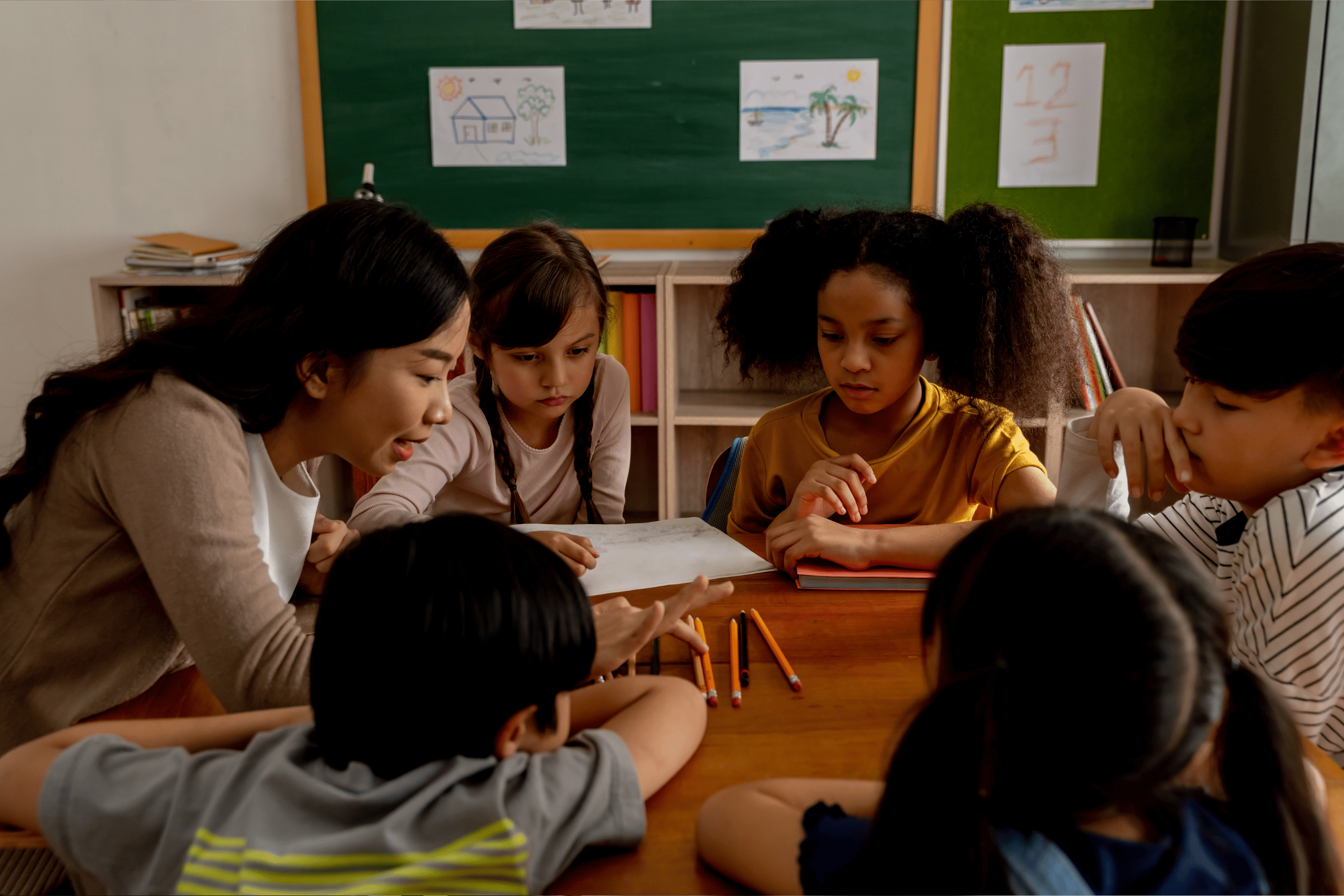Introduction
Raising confident, resilient, and adaptable children is every parent's goal. But how do you help them navigate a world full of challenges and setbacks? One powerful approach is to cultivate a growth mindset. A growth mindset is the belief that abilities and intelligence can be developed through effort, perseverance, and learning. It’s the foundation for children to thrive in both academic and personal pursuits. In this article, we’ll explore how parents, teachers, and even children themselves can foster a growth mindset, setting the stage for lifelong success.
Understanding Fixed vs. Growth Mindset
Before diving into strategies, it's important to understand the difference between a fixed mindset and a growth mindset. A fixed mindset assumes that intelligence, talent, and other qualities are static and cannot change. Children with a fixed mindset may say things like "I’m just not good at math" or "I always fail at sports." This perspective can limit their ability to take on new challenges or learn from mistakes.
In contrast, children with a growth mindset see challenges as opportunities to grow. They believe that effort and persistence can lead to improvement, no matter where they start. For them, success isn’t about being naturally gifted but about working hard and learning from experiences.

The Role of Parents in Developing a Growth Mindset
Parents play a critical role in helping their children adopt a growth mindset. One key strategy is to encourage effort over results. Instead of praising your child for being "smart" or "talented," focus on the process. For example, you could say, "I’m proud of how hard you worked on that project" rather than "You’re so good at this!" This shifts the focus from innate abilities to the value of hard work.
Parents should also lead by example. If your child sees you tackling new challenges with curiosity and perseverance, they’ll likely adopt a similar attitude. And when your child faces a setback, use positive reinforcement to remind them that failure is part of learning. For instance, if they didn’t make the soccer team, you could say, "I know you didn’t make it this time, but what can we do to improve for next year?"

The Role of Teachers in Fostering Growth Mindset
Teachers, too, are instrumental in cultivating a growth mindset. Classroom strategies such as praising effort, allowing students to correct mistakes, and encouraging collaborative problem-solving help students embrace the learning process. Constructive feedback is another important tool. Rather than simply marking answers wrong, teachers can offer detailed feedback that explains where students went wrong and how they can improve.
Furthermore, teachers can promote resilience by normalizing failure. They might share stories of famous people who failed multiple times before succeeding, or they might hold "failure days" where students talk openly about mistakes they’ve made and what they learned from them.
Practical Ways to Cultivate a Growth Mindset at Home

At home, there are simple, everyday strategies parents can use to cultivate a growth mindset. One of the easiest is embracing the power of "yet." If your child says, "I can’t do this," respond with "You can’t do this yet." This small word reinforces the idea that skills develop over time.
Mistakes should be viewed as learning opportunities rather than failures. Instead of scolding children for errors, ask questions like, "What did you learn from that?" or "What will you try next time?" Additionally, encouraging curiosity can lead children to develop a love of learning, making them more open to trying new things and embracing challenges.
The Science Behind Growth Mindset
The concept of a growth mindset is rooted in neuroscience. Neuroplasticity refers to the brain’s ability to change and adapt in response to new experiences. When children believe they can improve through effort, they’re more likely to engage in behaviors that strengthen their brains, such as problem-solving, critical thinking, and trying new tasks.
Research supports this approach. Studies show that children who adopt a growth mindset tend to perform better academically and are more resilient in the face of adversity. They are also more likely to enjoy learning for its own sake, rather than for external rewards like grades.
Recognizing and Overcoming Challenges
While fostering a growth mindset in children is highly beneficial, there are common challenges to be aware of. Resistance from children who are used to a fixed mindset can be a hurdle. They might feel frustrated or impatient when progress doesn’t come quickly. To overcome this, parents and teachers need to be patient and consistent, providing gentle reminders that improvement takes time.
Another challenge is balancing praise. While it’s important to encourage effort, over-praising can lead to children feeling like they have to work hard all the time. Make sure to balance praise with discussions about when to rest, reflect, and celebrate small successes.
Encouraging Self-Motivation and Independent Thinking
Children who are self-motivated and think independently are more likely to develop a growth mindset. One way to encourage this is by helping them set realistic goals. Rather than overwhelming them with lofty objectives, start with manageable tasks that build confidence.
Teaching self-reflection is another valuable tool. Encourage children to ask themselves questions like, "What did I do well?" and "What can I improve on?" This fosters accountability and helps them become more aware of their own learning process.

Creating a Growth Mindset Environment at School
In schools, a growth mindset can be cultivated through collaborative learning. Group projects allow students to share knowledge and learn from one another’s strengths and weaknesses. Teachers can also facilitate peer feedback sessions where students review each other’s work and offer constructive advice.
Creating a classroom culture that promotes open communication is crucial. Students should feel comfortable asking questions and admitting when they don’t understand something. This helps build an environment where learning, rather than perfection, is the goal.
Growth Mindset in Extracurricular Activities
The principles of a growth mindset extend beyond the classroom and into extracurricular activities like sports and hobbies. When children apply the growth mindset to sports, they learn that improving athletic skills takes time and practice. Teamwork also plays a vital role. Children learn to rely on one another, face defeats with grace, and push past personal limits.
Technology and Growth Mindset
Technology can be a powerful tool in supporting a growth mindset. Educational apps and games that reward effort, rather than instant success, can help reinforce the idea that learning is a process. However, it’s important to balance screen time with real-world learning experiences to ensure children stay engaged and curious.
Mindset and Emotional Intelligence
A growth mindset is closely linked to emotional intelligence. When children believe they can grow, they’re more likely to develop emotional resilience and empathy. By embracing challenges, they learn to manage frustration, cope with disappointment, and bounce back from setbacks. This mindset also fosters social skills, as children learn to collaborate with others and see different perspectives.
The Long-Term Benefits of a Growth Mindset
Children who develop a growth mindset are not only better equipped to succeed academically but also in life. They tend to be more resilient, confident, and adaptable. As adults, they are more likely to pursue lifelong learning, take risks in their careers, and tackle complex problems with creativity and persistence.
How to Measure Progress in Developing a Growth Mindset
Measuring the progress of a growth mindset can be tricky, but it’s possible. Parents and teachers can track behavioral changes, such as increased perseverance in challenging tasks or greater willingness to ask for help. Celebrating milestones, like improving a skill or reaching a personal goal, reinforces the progress children are making.
Conclusion
Cultivating a growth mindset in children sets the stage for a lifetime of learning and resilience. By focusing on effort, embracing challenges, and using mistakes as learning opportunities, parents and teachers can help children develop the mindset they need to thrive. In the end, it’s not about being the best; it’s about becoming better every day.
SHARE THIS
COMMENTS
Our mission is to guide individuals, teams, and organizations on transformative journeys of self-awareness and emotional intelligence. Through science-backed assessments, actionable insights, and tailored strategies, we empower people to unlock their potential, strengthen relationships, and achieve authentic success in both personal and professional life.
CONTACT INFO
@2025 Mindarts | All Rights Reserved
Terms & Conditions | Privacy Policy | Cookie Policy | Impressum
CONTACT INFO
@2025 Mindarts | All Rights Reserved
Terms & Conditions | Privacy Policy | Cookie Policy | Impressum


